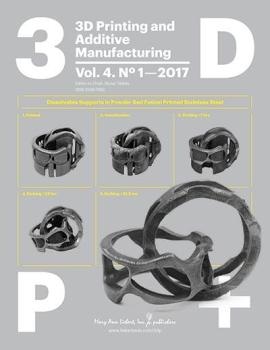May 19 2017
A recent study demonstrates proof-of-concept for incorporating computational design and simulation tools with 3D printing technology in order to develop self-expandable polymer stents capable of growing with pediatric patients, besides being biodegradable and requiring just a minimally-invasive procedure for implantation.
This unique method has been described in an article published in 3D Printing and Additive Manufacturing, a peer-reviewed journal from Mary Ann Liebert, Inc., publishers. This article is available open access on the 3D Printing and Additive Manufacturing website.
 3D Printing and Additive Manufacturing explores emerging challenges and opportunities ranging from new developments of processes and materials, to new simulation and design tools, and informative applications and case studies. CREDIT: Mary Ann Liebert, Inc., publishers
3D Printing and Additive Manufacturing explores emerging challenges and opportunities ranging from new developments of processes and materials, to new simulation and design tools, and informative applications and case studies. CREDIT: Mary Ann Liebert, Inc., publishers
M.S. Cabrera, B. Sanders, O.J.G.M. Goor, A. Driessen-Mol, C.W.J. Oomens, and F.P.T. Baaijens, Eindhoven University of Technology, the Netherlands, co-authored the study entitled "Computationally Designed 3D Printed Self-Expandable Polymer Stents with Biodegradation Capacity for Minimally Invasive Heart Valve Implantation: A Proof-of-Concept Study."
Researchers have developed an innovative approach to manufacture stents with a sufficient degree of plastic deformation and growth potential. In order to overcome the existing challenges in designing bioabsorbable polymer stents with the essential mechanical properties for use in minimally invasive procedures to implant tissue-engineered heart valves in young patients. The rapid prototyping method described by the Researchers involves developing an in silico model of a standard nitinol stent , followed by translating the computational simulation into prototype stents using a flexible copolyester elastomer and 3D printing. The mechanical properties of the stents were analyzed by the Researchers by subjecting them to crimping and crush tests. Accelerated degradation tests were also performed in order to evaluate their biodegradability.